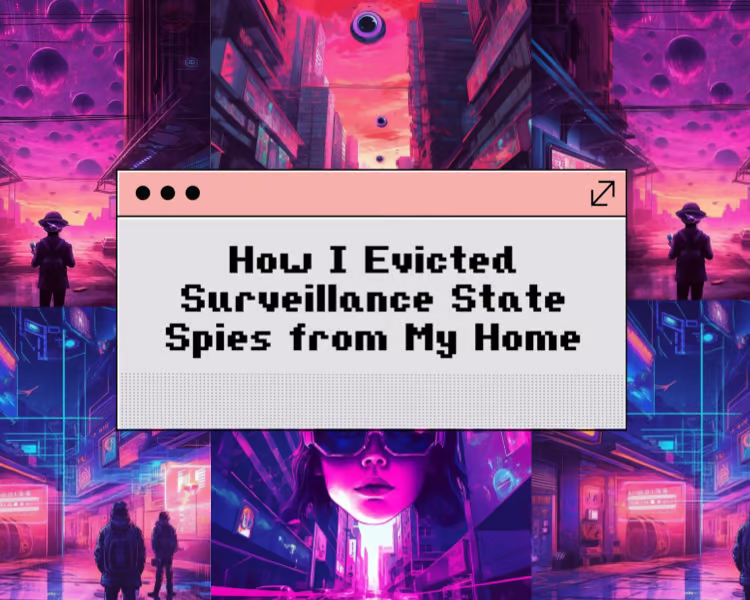Silent Watchers: The Government’s Disturbing Intrusion into Citizen Privacy via IoT Devices
In an era of breathtaking technological advancements, imagine a chilling reality where every word you utter, every secret you share within the supposed sanctity of your home, is captured, recorded, and scrutinized.
This isn’t a dystopian nightmare; this is the stark reality of life in the US, where everyday devices are exploited as surveillance tools by our own government.
The WikiLeaks revelation of nearly 9,000 pages of alleged internal CIA documents proves that the US government has infiltrated our private spaces in an unprecedented and chilling violation of privacy rights.

Devices that we rely on every day – Android and Apple smartphones, Samsung SmartTVs, Internet-enabled cars, and even Amazon’s Alexa – have been compromised, transformed into surveillance apparatus by the very government tasked with protecting its citizens.
Sophisticated hacking tools, powerful software, and an insatiable thirst for data have facilitated this chilling invasion into our lives.
With every command issued to your Alexa, every private conversation had within earshot of a SmartTV, you’re potentially providing evidence against yourself.
Taken out of context or used maliciously, this information could be used to paint a very different picture of our lives.
The CIA’s invasive practices don’t stop there.
Despite encryptions employed by secure communication apps like Signal and WhatsApp, they’ve allegedly developed ways to intercept these messages in real-time, before encryption can be applied.
Thus, our faith in these seemingly secure communication channels is brutally undermined, replaced by a creeping anxiety and a haunting question – who is listening?

The CIA allegedly bypasses encryption barriers by hacking into the devices themselves, recording calls, messages, and even keystrokes.
This flagrant invasion of privacy threatens the very fabric of civil liberties, transforming our own devices into spies within our homes and pockets.
Ever cracked a joke at home that, if overheard and twisted out of context, could land you in a world of trouble?
I know I have.
More unsettling still is the CIA’s alleged practice of retaining known security vulnerabilities in widely-used devices, instead of alerting the respective companies.
This hoarding of ‘zero-day’ vulnerabilities is an alarming act of negligence, leaving millions of devices susceptible to malicious hackers worldwide.
These revelations raise unsettling questions about the Vulnerabilities Equities Process, an Obama-era compromise designed to balance intelligence requirements with the public’s right to privacy.
It appears that the government has exploited the process’s opacity to keep information that potentially compromises millions of devices.
This violation of trust not only exposes a stark lack of transparency but also leaves our faith in the government’s intentions irreparably damaged.
As citizens, we need to balance our desire for convenience with the increasing need for privacy.
We must be proactive, understanding the privacy policies of the smart devices we use, opting for strong security features, disabling listening or recording capabilities when not in use, and opting for privacy-focused alternatives.

Knowing our rights and the laws regarding data collection and privacy in our jurisdiction is also paramount.
In conclusion, the revelation that our devices could be tools in a government-led assault on our privacy is a stark wake-up call.
Our privacy is not a commodity to be traded for surveillance capabilities, but a fundamental right that needs to be fiercely protected.
The silent watchers within our homes, those innocuous-looking IoT devices, have taken on a more sinister role, reminding us that in the eyes of the government, we may never truly be alone.
In an era where digital transformation is more than a buzzword, it’s a way of life, our homes and workplaces have begun to resemble scenes from a science-fiction movie.
Devices now listen to our commands, respond to our needs, and provide a level of convenience that was unimaginable a decade ago.
However, our trust in this interconnected ecosystem comes at a high cost – one that we often overlook.
The reality is that these Internet of Things (IoT) and smart home devices aren’t as benign as they appear.
Instead, they can quickly morph into surveillance tools, collecting personal data that could potentially end up in the wrong hands.
Curiously, most cybersecurity advisors, typically tech enthusiasts at heart, wouldn’t be caught dead harboring smart home devices in their personal spaces – they know all too well the dark secrets that lurk beneath the seemingly benign surface of these gadgets.
The Amazon Alexa is a prime example of such a device.

An innocuous-looking tool that has become a permanent fixture in countless homes around the world, Alexa’s primary function is to listen for a wake word and respond to your commands.
A functional, highly convenient tool, no doubt.
However, it’s worth noting that Alexa doesn’t just passively listen – it logs everything it hears.
This means that every mundane conversation, every private joke, every personal detail spoken within earshot of Alexa is recorded and stored.
Imagine this data taken out of context or used as evidence against you in a trial.
It’s a chilling prospect, isn’t it?
The silent eavesdropping isn’t limited to Alexa.
Other smart home devices, such as Ring Doorbell, Nest Cam, Google Home, Samsung SmartThings Hub, August Smart Lock, Honeywell Lyric Thermostat, Wink Hub, Roomba Vacuums, and Logitech Harmony Hub, all come with potential privacy concerns.
I consider them all to be in-home surveillance

Each of these devices, while revolutionizing our everyday living and contributing to a seamless lifestyle, have the potential to infringe upon your privacy.
So, the pressing question is, how can you safeguard yourself?
How can you continue to enjoy the fruits of technological advancements without compromising on your privacy?
Here are some tips I used to evict the surveillance state from my home:
1. Educate Yourself: Get to know the ins and outs of any device you plan on using. Study its privacy policy, data sharing and storage practices, and available security features.
2. Review and Audit: Periodically review what permissions your devices and apps have and revoke unnecessary ones.
3. Microphone and Camera Cover: Use physical covers for microphones and cameras when they’re not in use.
4. Disconnect Devices: Unplug or switch off devices when they’re not in use, minimizing the time they have to record or collect data.
5. Local Network Segmentation: Segregate your IoT devices from your main network. Set up a guest network specifically for these devices.
6. Firewall Protection: Employ a robust firewall to monitor inbound and outbound connections.
7. Strong and Unique Passwords: Don’t use the default passwords that come with your devices. Instead, use unique, complex passwords and change them periodically.
8. Multi-factor Authentication (MFA): Enable MFA for all devices and accounts where available.
9. Software Updates: Regularly update device firmware and software. Updates often contain patches for security vulnerabilities.
10. Use Encrypted Communication: Choose devices that communicate through encrypted channels.
11. Limit Voice Commands: Limit the use of voice commands, especially for sensitive conversations.
12. Privacy Settings: Ensure your privacy settings on smart devices are set to the highest level possible.
13. Disable Tracking: If not needed for functionality, disable location and activity tracking on your devices.

14. Local Data Storage: Opt for devices that store data locally and not in the cloud, where it’s more susceptible to breaches.
15. Avoid Sharing Data: If possible, choose not to share data with the device manufacturer. Many devices offer this option, although it might limit some functionalities.
16. Understand the Privacy Policy: Before purchasing any smart device, familiarize yourself with its privacy policy. Understand what data it collects, how it’s stored, who has access to it, and how it can be used.
17. Opt for Strong Security Features: Choose smart devices with robust security features, including end-to-end encryption and two-factor authentication.
18. Disable When Not in Use: Consider turning off the device’s listening or recording capabilities when they’re not in use. Most smart devices allow users to disable microphones and cameras.
19. Consider Privacy-Focused Alternatives: Go for devices that prioritize user privacy. For instance, a security camera that only stores data locally and doesn’t connect to the internet or “cloud”.
20. Know the Law: Familiarize yourself with the laws regarding data collection and privacy in your jurisdiction. Legal requirements for accessing your device’s data can vary widely, from needing a warrant to no warrant at all.

As we continue to embrace smart technology, it’s crucial to remain vigilant about our privacy and security.
Remember, the key to smart living is not just convenience; it’s the balance of convenience and privacy.
While we enjoy the numerous benefits that come with the rapid advancement of technology, we need to be mindful of potential risks.
Stay Curious,
Addie LaMarr



